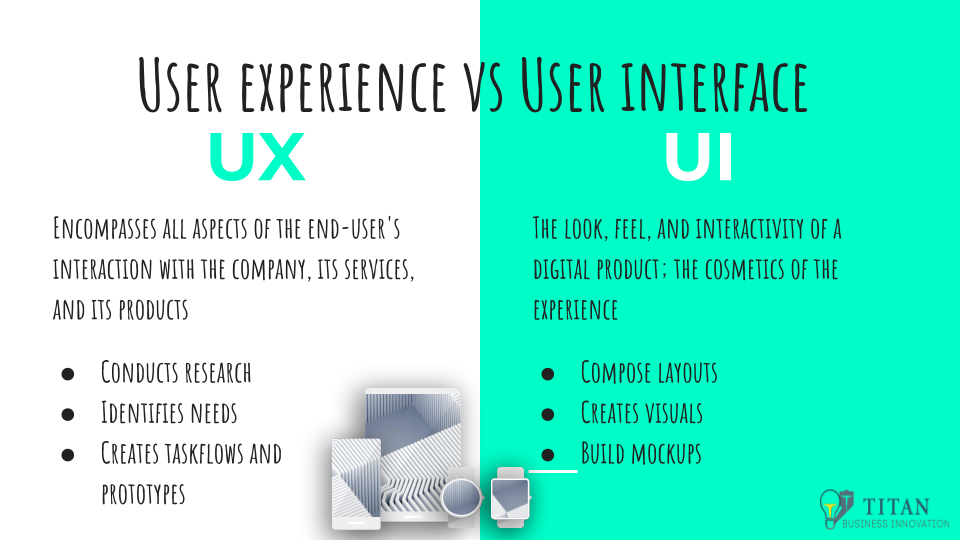UX and CX are becoming increasingly important as brands search for a way to stand out. In addition, customers have become more demanding and have many online avenues to voice their frustrations with brands that do not meet their expectations. As a result, companies that best understand UX and CX and implement strategies focusing on customer satisfaction will continue growing faster than their competitors.
Firstly let’s clearly define UX and CX. UX means user experience, which refers to a user’s overall experience while interacting with a product or service. It encompasses all aspects of the user’s interaction with a company, its products, and its services. On the other hand, CX stands for customer experience, which refers to a customer’s overall experience with a company throughout the entire customer journey. CX includes all touchpoints with a company, from initial awareness to post-purchase support.
The goals of UX and CX are similar. They both aim to create a positive user experience, maximize product or service satisfaction, and build loyalty. When UX and CX exceed user expectations, customers can be strong advocates for a brand which is the ultimate goal of any company.

UX is essential to a company for several reasons:
- Better user satisfaction: UX design ensures that the product or service meets the user’s needs and is easy to use. Good UX leads to higher user satisfaction and increased loyalty.
- Increased conversion rates: A well-designed UX can help to increase conversion rates. By providing a positive user experience, users are more likely to complete the desired action, whether purchasing, filling out a form, or signing up for a service.
- Reduced development costs: By investing in UX upfront, companies can reduce development costs by identifying and resolving issues early in the design process. This helps avoid costly redesigns or rework later on.
- Competitive advantage: A good UX can provide a competitive advantage by differentiating a company’s product or service from its competitors. Users are more likely to choose a product or service that provides a better user experience, even if it may cost more.
- Improved brand perception: A positive user experience can improve the overall brand perception. Users are more likely to recommend a product or service with which they’ve had a positive experience, leading to increased brand advocacy and loyalty.

CX provides the following benefits to a company:
- Increased customer loyalty: A positive customer experience can increase loyalty and advocacy. Customers are more likely to return and recommend the company to others if they have had a positive experience.
- Increased revenue: Focusing on CX can increase revenue by retaining existing customers and attracting new ones. Customers with a positive experience are more likely to repeat purchases and recommend the company to others.
- Competitive advantage: A company that provides a superior customer experience can gain a competitive advantage. Customers are more likely to choose a company that offers a positive experience, even if it may cost more.
- Improved brand reputation: A positive customer experience can help to improve the overall brand reputation. Customers are more likely to recommend a company they’ve had a positive experience with, which can lead to increased brand advocacy.
- Valuable customer insights: CX initiatives allow companies to gather valuable insights about customer needs, preferences, and pain points. This information is used to improve products and services and to identify new opportunities.
While UX and CX have some similarities, the main difference is their scope. UX is focused on the user’s experience with a specific product or service, while CX focuses on the overall experience with a company. UX is a subset of CX, as a good user experience is essential to a good customer experience.
How do UX and CX differ
While UX and CX have some similarities, they have different goals and approaches. UX is focused on the usability and design of a specific product or service, while CX is focused on creating a positive experience at every touchpoint along the customer journey.
UX designers need to understand user needs, behaviors, and preferences deeply. In addition, they need to be skilled in conducting user research, creating user flows and wireframes and designing interactions and visual elements that are intuitive and easy to use. Essential skills required for UX include:
- User research: The ability to conduct user research to understand user needs and pain points.
- Information architecture: The ability to organize information in a way that is easy to navigate and understand.
- Interaction design: The ability to design interactions that are intuitive and easy to use.
- Visual design: The ability to create visually appealing designs consistent with the brand and meet user needs.
- Prototyping and testing: The ability to create prototypes and test designs with users to ensure usability and effectiveness.

CX professionals, on the other hand, need to have a deep understanding of the customer journey, from pre-purchase to post-purchase interactions. In addition, they need to be skilled in using customer insights and data to understand customer needs and preferences and in designing solutions that meet those needs at every touchpoint. Critical skills required for CX include:
- Customer research: The ability to conduct customer research to understand needs, preferences, and pain points.
- Journey mapping: The ability to map the customer journey and identify key touchpoints and pain points.
- Communication and collaboration: The ability to work cross-functionally with marketing, product, and customer service teams to design solutions that meet customer needs.
- Metrics and analytics: The ability to measure and analyze customer data to identify areas for improvement.
- Problem-solving: The ability to identify and solve customer problems at every touchpoint along the customer journey.
By working together, UX and CX professionals can create a seamless and positive overall customer experience that meets the user’s needs and exceeds their expectations. Building a strong brand is vital in today’s marketplace, and implementing a UX and CX strategy working together will strengthen a company in both the short and long term.

